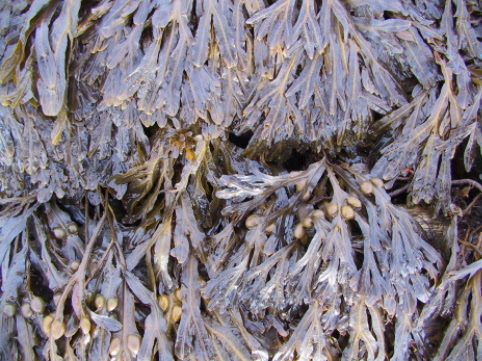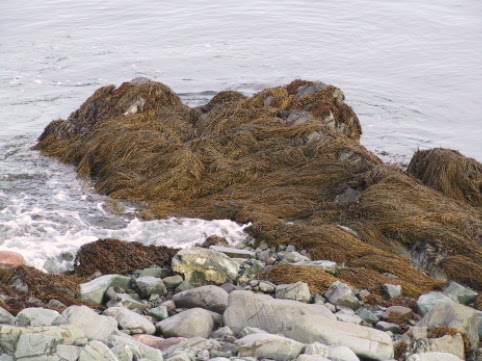 Along our shores we have easy access to a superfood for growing plants. There's a long tradition in this province of harvesting seaweed to use as fertilizer in gardens. Farmers in the province today that practice organic methods still use this traditional trick. A walk on the beach to gather seaweed can be an excellent way to spend an afternoon before the gardening season really starts and after it ends for the year. All the better if you can get kids involved collecting seaweed too, fun is sure to follow! Seaweed also has thousands of uses as food ingredients, animal feed, in home and personal care items, in medicine and supplements and lots more.
Along our shores we have easy access to a superfood for growing plants. There's a long tradition in this province of harvesting seaweed to use as fertilizer in gardens. Farmers in the province today that practice organic methods still use this traditional trick. A walk on the beach to gather seaweed can be an excellent way to spend an afternoon before the gardening season really starts and after it ends for the year. All the better if you can get kids involved collecting seaweed too, fun is sure to follow! Seaweed also has thousands of uses as food ingredients, animal feed, in home and personal care items, in medicine and supplements and lots more.
For some awesome underwater seaweed pictures taken in Newfoundland while snorkeling, check out this marine photography blog.
For a photo glossary of seaweed types and their uses visit the Seaweed Industry Association and search under 'Seaweed' on the top menu bar.
For fun info and recipes using seaweed, and to purchase their seaweed zine Wild Seaweeds of the North Atlantic, visit the Ecology Action Centre's Small Scales blog.
The following is an excerpt from Ask Ross Traverse About Gardening by Ross Traverse.
"Gardeners in Newfoundland and Labrador have been growing vegetables for over 500 years without the use of commercial fertilizer. A main source of plant nutrients has been and still is seaweed (locally called kelp). Most settlements were along the coast where kelp could be harvested from the beach. It was taken to the gardens and hay meadows where it was spread and/or composted. In the early days there was no scientific knowledge of kelp. Gardeners just knew that it worked.
We now know that seaweed contains an excellent balance of essential plant nutrients and it has the amazing ability to neutralize acidic soil. In addition, it has been found that seaweed contains growth hormones which stimulate the growth and health of plants over and above fertilizer. Could you ask for more? Our ancestors knew that kelp helped crops grow even without any scientific research. I have seen excellent crops of potatoes grown in pure peat bog and turnips in pure beach sand, all growing in a think layer of composting seaweed underneath the beds. Amazing!" (p. 12)
Harvesting and Using Seaweed for the Garden
When gathering seaweed for your food garden:
- Collect it from areas that are physically safe and free from contamination.
- Gather considerately, as you should when foraging for any wild plant. Only take a small amount from any area and respect the local environment and other organisms. There should be little indication that you have been there after you leave.
- Choose pieces that are fresh and still moist, not yet dried out from the wind and sun.
- Rinse it off with clean, unsalted water before applying it to the garden. Too much salt will harm the soil.
Try applying locally harvested seaweed in one of these ways. For all the methods it is a good idea to chop up the seaweed smaller if you have harvested large pieces, so that it breaks down faster to feed plants.
- Loosely work seaweed pieces into soil in early spring as soon as ground can be worked or in late fall after the harvest to give it time to break down before planting.
- Add pieces of seaweed into a backyard compost bin to improve compost. It breaks down quickly and will speed up the decomposition of other organic material.
- Shred up seaweed into small pieces and use it as mulch.
- Blend seaweed with an equal amount of water to make a concentrated liquid fertilizer, seed germination (soaking) liquid or foliage spray. Dilute the seaweed 'smoothie' with lots of clean water before application, about 1 cup seaweed concentrate to a large watering can or bucket of clean water. Use a traditional blender or hand blender in a bucket to make the seaweed 'smoothie'.
This video from British Columbia can help you get started making liquid seaweed concentrate:



